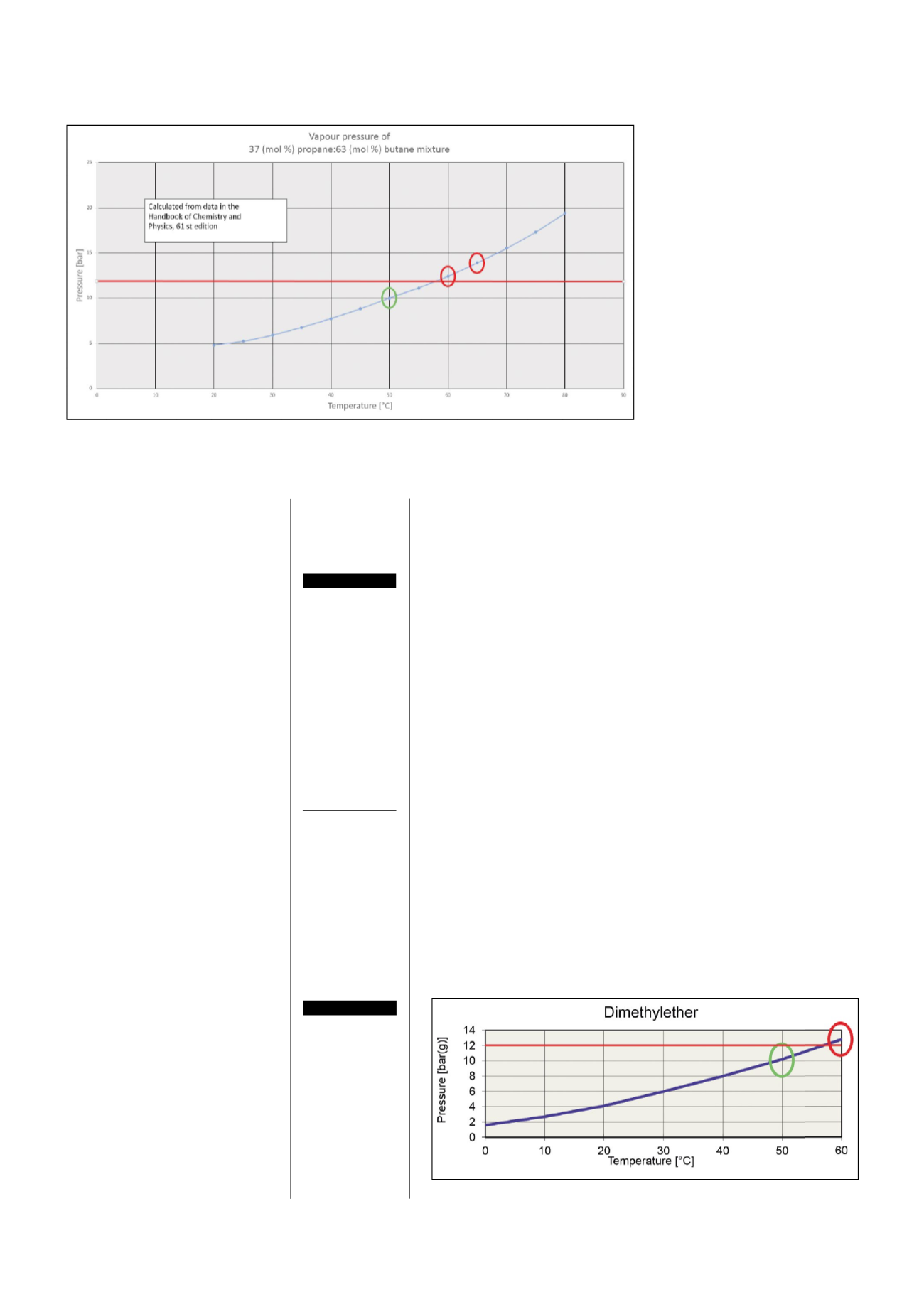
ations. After all, plastic containers
should provide the same level of
safety as that of metal aerosol cans.
The European Commission and
the Aerosol Industry, represented
by their associations – first and
foremost the FEA (European Aer-
osol Federation) – have strongly
emphasised this aspect. This
leads to the question as to what
conditions metal cans really with-
stand, as a kind of established
safety criterion. We already know
that cans should withstand 50°C
and the related pressure in the
aerosol pack.
Characteristics
of metal cans
Metal cans can resist tempera-
tures higher than 50°C. Melting
points are far above those known
for plastics. The limiting factor is
in fact the filling, especially the
propellant, which causes the in-
crease in pressure at elevated
temperatures. In fact, sometimes
even higher temperatures than
50°C are recorded. Inside a store’s
glass show window, the tempera-
ture can go above 60°C.
Fig. 1 shows pressure as a func-
tion of temperature in the case of
a mousse containing a standard
filling with a propane/butane
blend. At 50°C the pressure is less
than 12 bar, which is the permit-
ted pressure according to the
standards of the
European Aero-
sol Dispensers Directive
(ADD).
An appropriate metal container
would be constructed to resist 12
bar without deformation, and
even up to 18 bar. Such an aerosol
should easily resist temperatures
above 60°C. In actuality, such
aerosols can cope with tempera-
tures up to 70°C.
In a test, it can be shown that
cans like this burst at a tempera-
ture above 70°C. In a temperature
profile of a stability test* the cans
described above had been ex-
posed to high temperatures. 50
cans had been heated to 70°C and
the temperature was sustained for
five hours. Then the temperature
was raised to 75°C and kept for
another five hours.
Observed defects*
Two cans showed high bottom
deformation. All cans showed
small deformation in the bottom
area and slight deformation in the
shoulder/valve area as the valve
started to lift up. Four cans
showed high deformation in the
Fig. 1: Temperature related pressure of a propane/butane-blend
Fig. 2: Temperature-related pressure of dimethyl ether
1975). This was the first report
about microorganisms capable of
consuming man-made materials.
There is also a microorganism
that lives in an insect, which can
digest types of plastics such as
PE. There are bacteria that can be
found in moths (reported 2014)
which convert polyethylene into
nourishment for the moth. Al-
though the effect is very small,
there is evidence that nature in-
vents bugs that could possibly
consume any type of plastic.
However, the reported consump-
tion rates are quite low: it would
take about 300 years for a PET
container to be consumed. The
fact that plastics can be absorbed
more quickly back into the earth
than assumed up until now might
be an argument to consider plas-
tics as a material to produce aero-
sol containers.
On the other hand, we need to be
aware that in the future, plastics
can possibly be subject to micro-
biological contamination, which
leads to the question of whether
biocides are required to protect
the plastic material.
Restrictions for
plastic containers
The conclusion is that for plastic
containers, there are some restric-
tions related to their stability
which again leads to cost consider-
LIMITATIONS
Some limitations
for plastic cans
are even
more
restrictive
than
those for metal
cans
Shaping plastic
cans can be costly
PLASTIC CANS
Transparent
plastic cans
have
enhanced
appearance
and decoration
options
PACKAGING
52
l
COSSMA 4 I 2017


